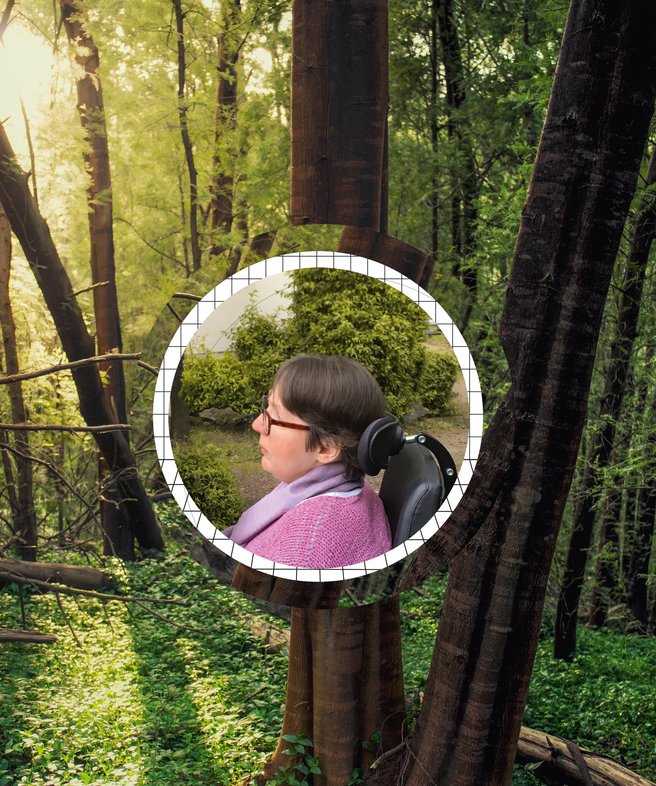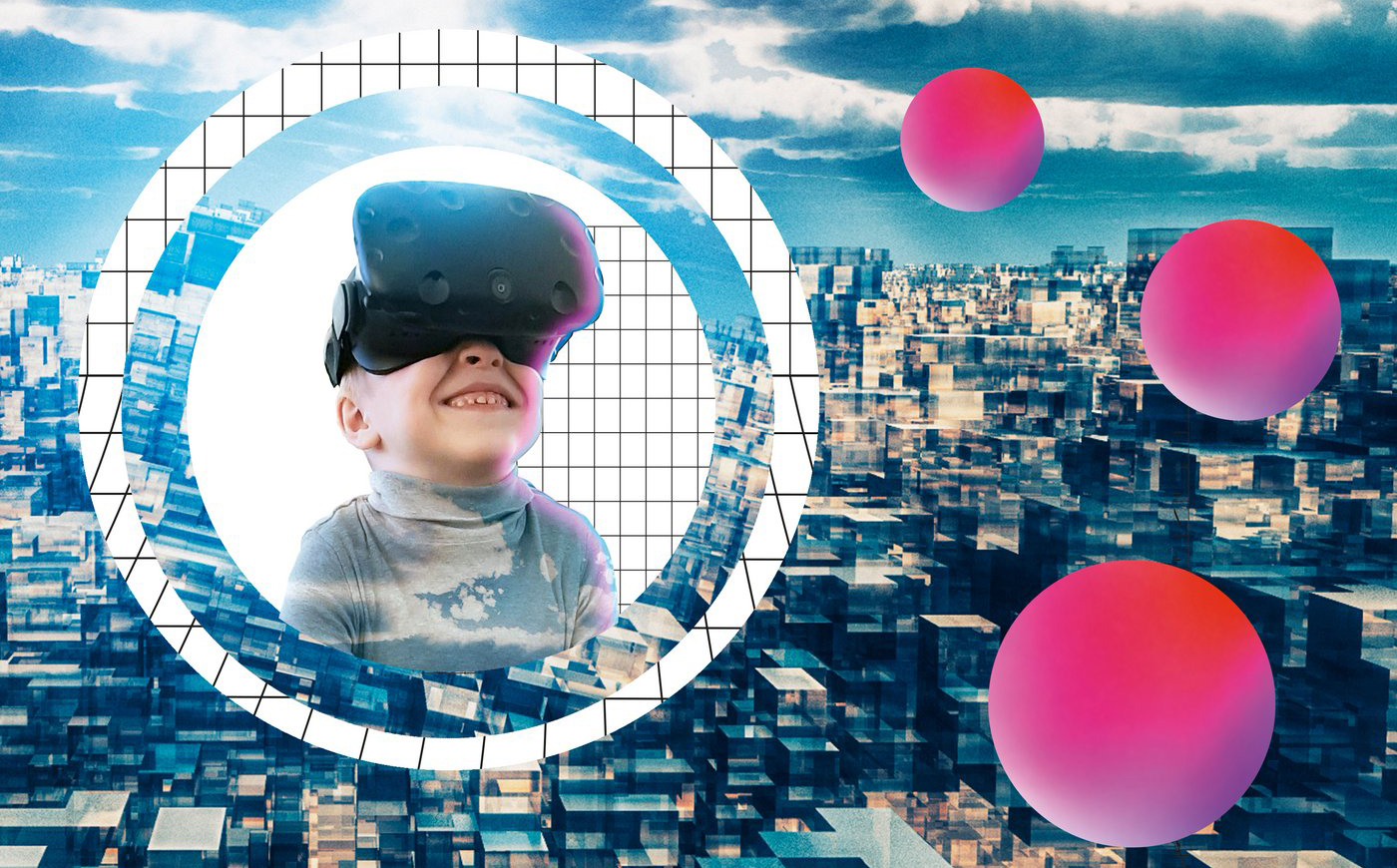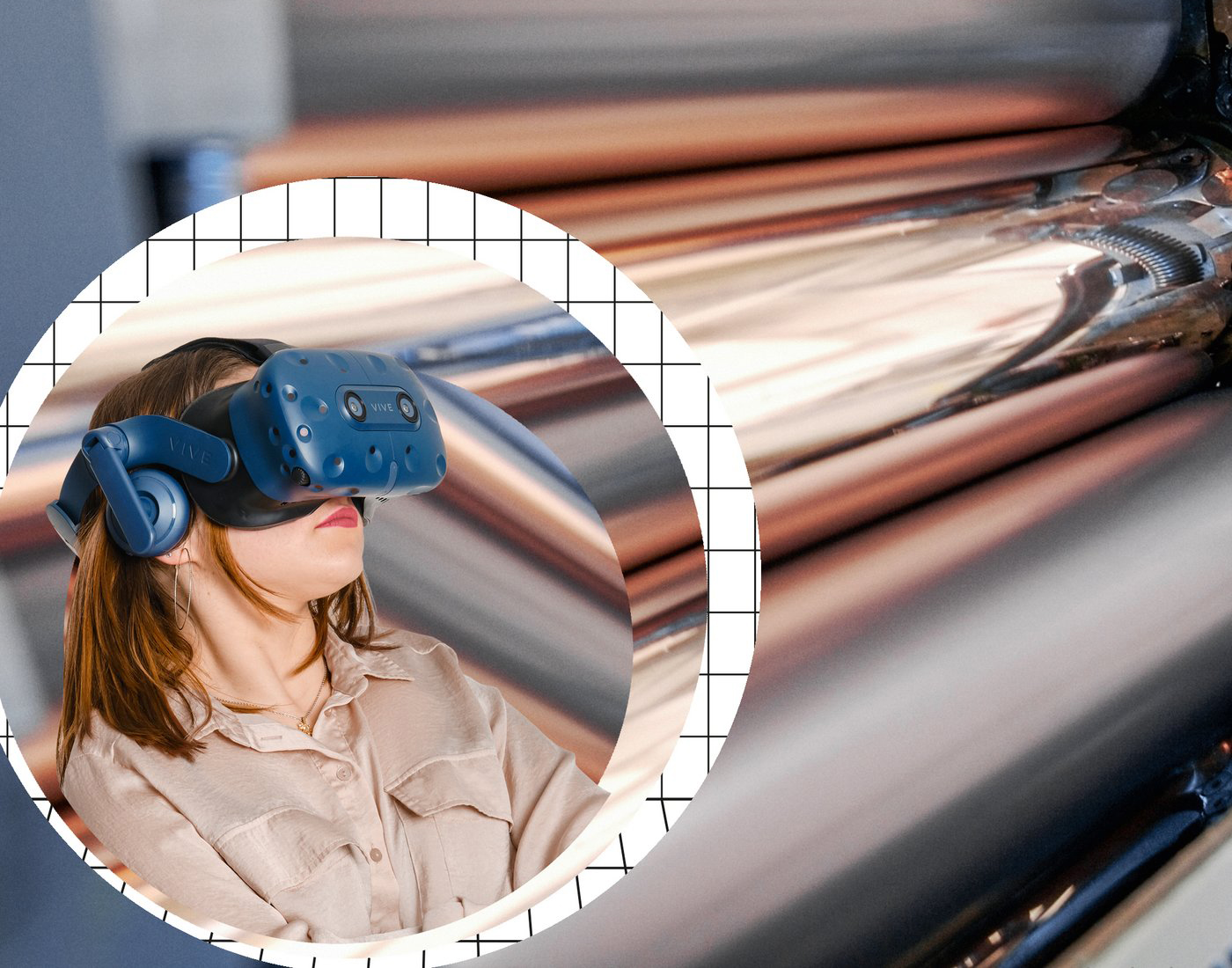MASTERING EVERY HURDLE VIRTUALLY

When Camilla Wieck, who lives in Wiesbaden, Germany, wants to take a walk in the woods, she first gets comfortable in the living room of her home. Then she puts on virtual reality (VR) goggles and escapes out into nature. Wherever she looks, she’s surrounded by trees. Green leaves sway in the breeze, shadows dance on the forest floor. In actuality, Wieck is confined to a wheelchair due to a muscular disorder and it is difficult for her to spontaneously go on any outings. When Mikhail Dubovtsev, in Minsk, Belarus, wants to train his motor skills, he plays a game in the virtual world. To do this, the six-year-old uses VR goggles and a sensor on his arm. The sensor tracks how Mikhail turns his wrist and simulates the movement in VR. With every turn of his actual arm, a virtual arm in the game turns, enabling Mikhail to swing a ball from left to right and hit various targets. Patients with cerebral palsy in Belarus and Great Britain practice moving their arms in a controlled manner with the help of VR physiotherapy.
When Josephine Schipke wants to learn how printing processes work, as part of her professional training, the budding media designer can visit a virtual print shop. The VR educational content for people with disabilities was developed by a team at the Oberlin Vocation Training College in Potsdam, just outside of Berlin. Schipke, who uses a wheelchair due to chronic joint stiffness, tests the VR module as part of her own training, to make it more accessible for people with physical limitations.
Three people with physical disabilities are using virtual reality for learning, training and traveling. The technology has simplified something that used to be difficult for them. In this niche, VR is bringing more self-determination to people’s lives. Virtual reality used to be considered a technology of the future and was supposed to fundamentally alter the worlds of work and daily life. Seven years ago, when entrepreneur Palmer Luckey was just twenty years old, he inspired the technology world with an immature prototype of VR goggles. Why? Because Luckey’s design was the first to show that VR goggles could be produced at a relatively low cost. When the first model was ready for market four years later, experts outdid one another with predictions of its success. VR was going to be the next big thing, with fashionistas trying on clothing using VR, vacationers scoping out their destination beforehand and music lovers attending concerts virtually. Yet it never became the next big thing and the euphoria quickly faded. In 2019, a mere 3 percent of Germans owned VR goggles. Yet the examples from Wiesbaden, Minsk and Potsdam demonstrate the incredible value of this technology today.
Mikhail Dubovtsev slowly turns his right wrist. From left to right, then back again. The six-year-old is wearing VR goggles, which cover almost his entire face, and a sensor on his arm. The sensor transmits all of Mikhail’s movements into the virtual world. As in a carnival game, Mikhail must hit various round targets with the ball. But instead of throwing, he moves the virtual ball by turning his wrist. He gets points for every hit. “I got the high score of one thousand points right at the start,” Mikhail says with pride.
What just a year ago was an annoying routine for Mikhail now has him bouncing in anticipation on his chair. At the Minsk City Central Rehabilitation Center for Children with Neuropsychiatric Diseases, Mikhail is taking part in a special form of physiotherapy. While training his motor skills he gets to play in the virtual world. Or at least that’s what it feels like for the preschooler. After the first session, his mother says Mikhail’s voice was bubbling with excitement while he enthusiastically clapped his hands.
The Inveion Project would like to use this therapy internationally to help treat children with cerebral palsy. To this end, the software company The Parallel is cooperating with the Health Ministry in Belarus. In September 2019, the team completed its first clinical study involving 58 children. Many were better able to control their arm movements after the treatment. The positive results are encouraging. The team is now working on transforming the prototype into a market-ready product and has expanded its pilot project to Great Britain.

“I got the high score of one thousand points right at the start.“
When Mikhail was born, his family had no idea about his condition. He was born prematurely in the thirty-fourth week of pregnancy and did require resuscitation after he stopped breathing during the birth. But he seemed to be healthy after that—until Mikhail reached nine months of age, when doctors noticed what is known as a varus deformity. The baby’s legs were twisted, the knees angled towards the center of the body. The diagnosis was infantile cerebral palsy. The neurons in Mikhail’s brain that regulate the coordination of the arms and legs had died due to a lack of oxygen during the birth.
Before he started the VR treatments, whenever Mikhail tried to draw, the crayon would repeatedly fall out of his hand. When he tried to stand up, his mother needed to help him. When he tried to raise a spoon to his mouth, his whole arm trembled. After sixteen training sessions, he’s shown marked improvement. Mikhail can leave his wheelchair more often and slowly walk with a walking aid. Nowadays when he grabs a crayon, he can really hold it and the lines he draws are straighter. What seems like a miracle is actually based on a neurological phenomenon. While Mikhail is practicing controlled movement patterns using VR, other neurons begin to take over the tasks of the ones that died.
Mikhail and his mother travel the three hours from Novopolotsk to Minsk for the therapy every three months. He already has butterflies in his stomach days beforehand, as he’s looking forward to the session so much. And although Mikhail’s mother notices clear differences in her son thanks to the VR therapy, the training in Minsk isn’t enough by itself. At home Mikhail must do special exercises every day and also receives other treatments—he does squats, goes swimming, gets massages. All of this contributes to alleviating Mikhail’s symptoms. The training has taken over almost his entire life. Mikhail says he does his best, every day—so that some day he will feel better, that he’ll be able to walk on his own.
Virtual reality has great potential in the field of medicine. Burn victims experience pain relief by walking through the cold of virtual winter landscapes. Alcoholics practice rejecting drinks in virtual bars. People with anxiety disorders can expose themselves to their fears in a controlled environment. The research institute BIS Research estimates that the
value of VR on the Europan health market will be
around 2.9 million US dollars by 2025. But there’s yet another area where virtual reality has great
potential: education.
A printing press with color-coded cylinders is floating in the room. Using her virtual arm,
Josephine Schipke grabs the red cylinder and lifts it out, and then does the same with the yellow, and then the green one. Once all the cylinders have been taken out, the 20-year-old Schipke puts them all back again, piece by piece. This teaching module, which Schipke is testing in the Media Lab of the Oberlin Vocation Training College in Potsdam, Germany, is part of the InProD2 Project.
For this project, Oberlin Vocation Training College has joined forces with the University of Wuppertal (BUW), the Institute for Text Optimization, the mmb Institute and the ZFA (a vocational college for print and media). Together they’re working on making the vocational training for media professions easier for people with mental and physical disabilities. Trainees click through the virtual modules at their own pace. Technical terms made comprehensible, simply written sentences, easy to understand. It is hoped this will help trainees with learning deficiencies to learn the profession in a self-determined way.

"I am convinced of the advantages of VR."
At Oberlin Vocation Training College, Schipke has found a vocational training opportunity that is well suited to her needs. The budding media designer has been using a wheelchair since she was a child. Because she suffers from Arthrogryposis multiplex congenita, a condition that causes the joints to stiffen, she can raise her arms no further than chest-height and can only walk short distances without her wheelchair. At the Vocation Training College, she’s getting support for her studies. An assistant is on call at all times and helps her clear the daily hurdles. She helps Schipke put on her jacket when she wants to go outside, and assists her when she needs to use the restroom. Schipke also has a special chair, which she can lock in place with a switch on the armrest so that it doesn’t roll away from the desk.
Schipke began her vocational training in September 2019, just a few months after Oberlin Vocation Training College had started the testing phase of the InProD2 Project. Schipke has delved into the digital print shop numerous times, testing whether the navigation works for people in wheelchairs. On her first visit, she was teleported directly to the printing press although she didn’t want to go there. As she tried to click her way through the explanatory boxes of text, which should have been floating in the air in front of her, the text disappeared from her field of vision. There’s a lot that has to be adjusted for Schipke because the module was programmed from the point of view of a person who is standing, making her feedback even more valuable for the project team. After all, the test phase is exactly about finding the weaknesses of the current state of the development and to make it more accessible for people with various limitations over the long term. That’s why one of the trainees puts on the VR goggles every two weeks to find out where there are still problems.
Although the current state of the teaching module isn’t yet ideal for Schipke, she’s firmly convinced of its advantages. With VR, every trainee can individually visit the print shop, look at the machines and components from different perspectives and better understand the complex connections. For the Oberlin project team, this teaching success is crucial. Because printing presses are difficult to access while they’re in operation, VR can offer a better inside view. The machines can be halted for teaching purposes, but to be able to understand the individual parts and their functions, you really have to take the machines apart. Now this can be accomplished in VR. The original goal of Palmer Luckey was to provide gamers with a more immersive gaming experience. And the industry from whence VR originated remains where it is still most widely used: the entertainment industry.
Camilla Wieck guides her electric wheelchair into the living room, puts on VR goggles and immerses herself in nature. She walks over uneven ground and sees the sun shining through the leaves of the dense forest. For Wieck, this trip into the virtual world is a welcome change of pace. The 49-year-old’s mobility is limited due to spinal muscular atrophy. The disorder leads to weakness and wasting in her muscles; she describes it as what happens to muscles when they’re immobilized in a cast to mend a broken bone. The difference in her case, however, is that her muscles cannot regain any strength, even with intensive training. That’s why Wieck has never been able to walk, stand or raise her arms above her head. Although this is her life as she knows it and she copes well with her condition, she needs a lot of support in everyday life. She receives assistance from an outpatient nursing service in the morning to get ready for the day: bathing, brushing her teeth, getting dressed. When she returns home from work, the nursing service and a daily assistant help Wieck again. Everything is clearly arranged and scheduled. Wieck says spontaneity really isn’t in her vocabulary. She must plan any activities outside the home weeks in advance. Yet this doesn’t keep her from working. After having to give up her full-time job as an industrial manager due to a serious accident, she started working for the IFB Foundation in Wiesbaden, an organization that helps disabled people. She’s been working there for 22 years and spends 20 hours each week coordinating all the tasks for the sponsoring association and the volunteers. A barrier-free workplace with speech software and a specialized keyboard make it possible for Wieck to carry out her job just like anyone else.
“WHEN I WANT TO HIKE, I CAN DO THAT THANKS TO VR FIVE MINUTES LATER.”
It’s in her leisure time that her impairment becomes more of an issue. An excursion to the movies or to a museum has to be planned almost three weeks in advance—she requires a transport service for this and the service is usually booked up weeks ahead of time. Sometimes Wieck just takes the next available reservation and then goes to the cinema on that day even though she doesn’t even know what films will be showing. She’s dispensed with vacations altogether due to the planning efforts required and the high costs. But now, with the help of virtual reality, she can still get new impressions and experience new environments and is happy to have the opportunity. She initially wasn’t terribly enthusiastic about the technology and didn’t take VR very seriously. But when she finally experienced a fully immersive VR program for the first time, she was deeply impressed. She was able to walk, to perceive the environment from the perspective of a person who was standing, and could easily overcome minor obstacles. Even if VR cannot replace the real world, and accessibility in the real world must still be further expanded, the technology provides Wieck an excellent opportunity to be spontaneous. “If I want to go for a hike, five minutes later I can do so thanks to virtual reality,” she says. Wieck is planning to go soon on a virtual tour of the Grand Canyon, to take a close look at the Mona Lisa in the Louvre, and to see lions, elephants and giraffes on safari in South Africa.
For Camilla Wieck and Mikhail Dubovtsev, virtual reality is already enriching their everyday lives. Josephine Schipke is helping to set new standards for accessible learning with the technology. These examples show that virtual reality has a great deal of potential to change lives for the better—and to help people with disabilities to live even more self-determined lives.